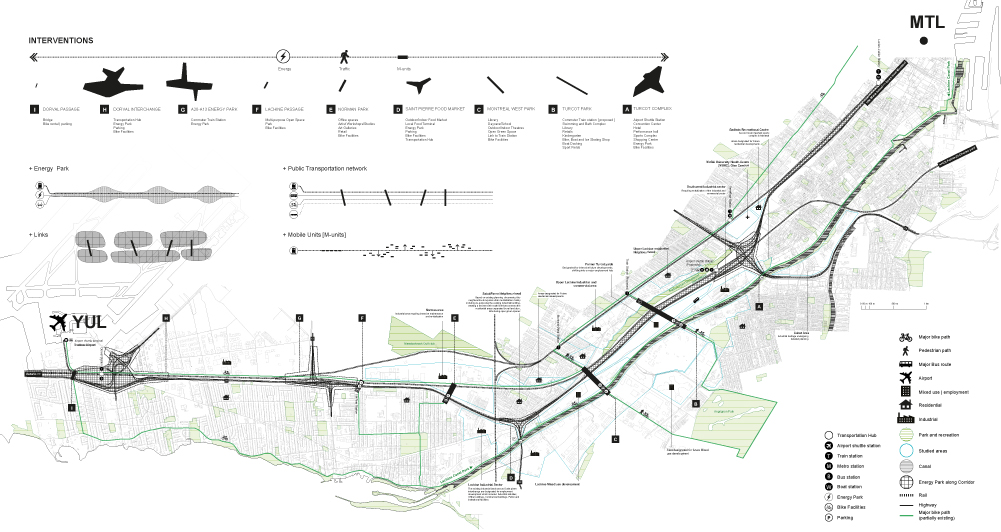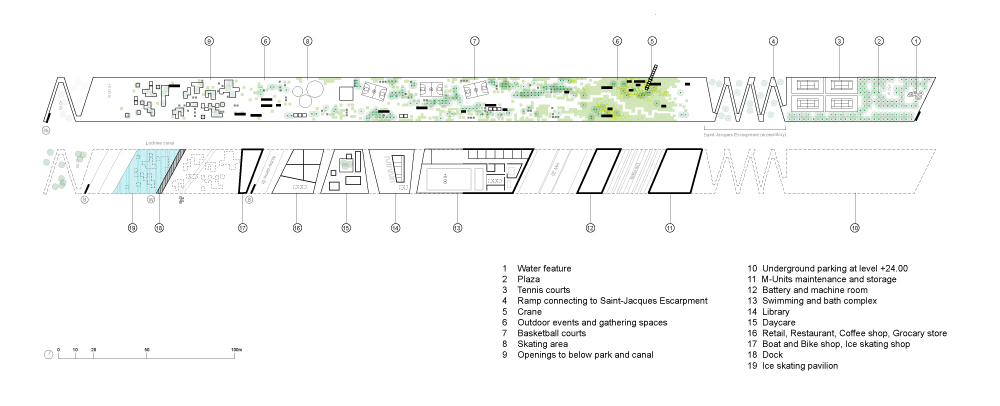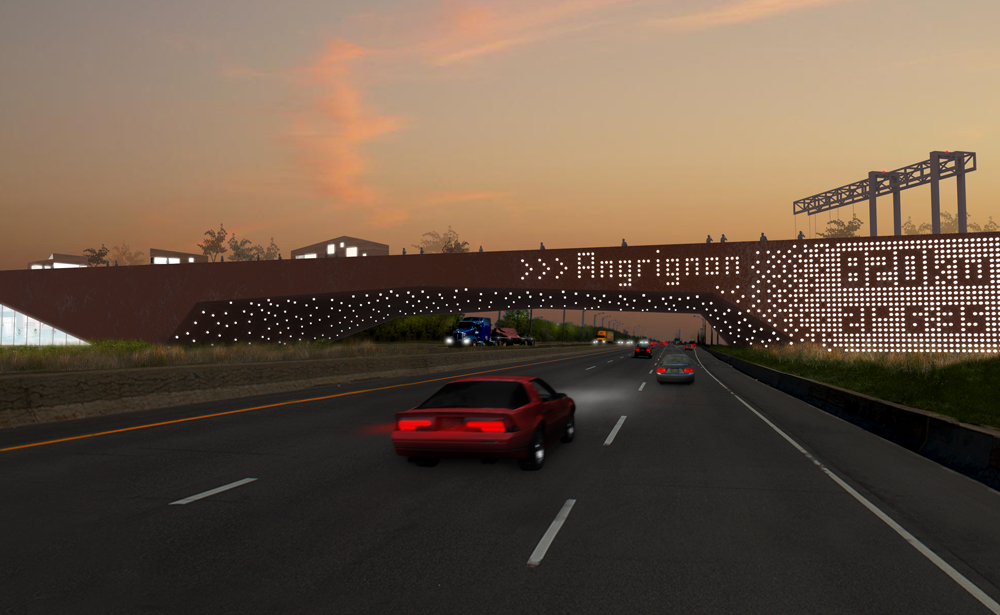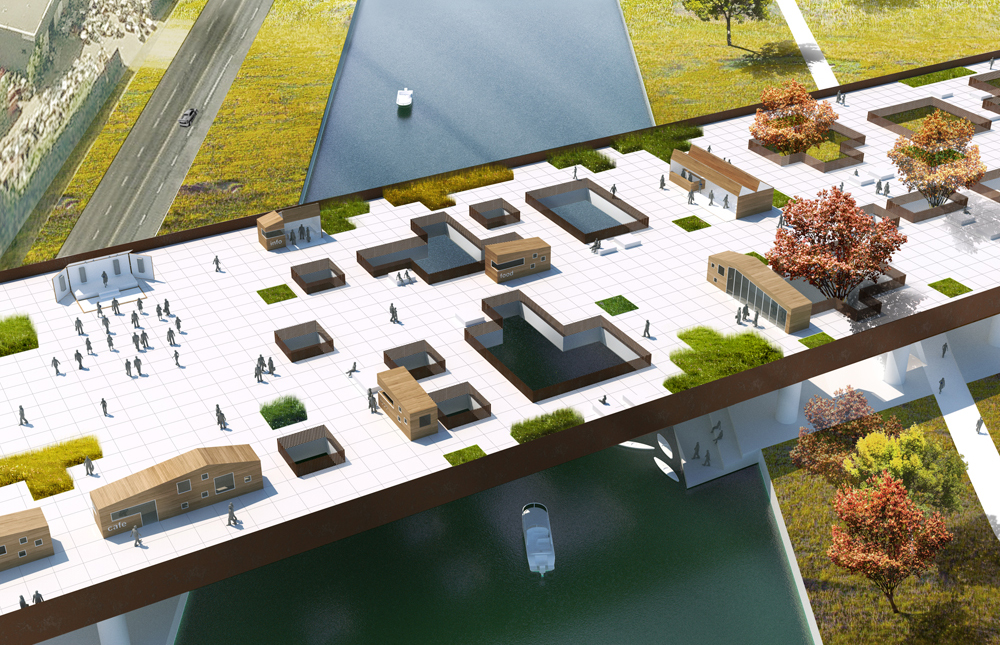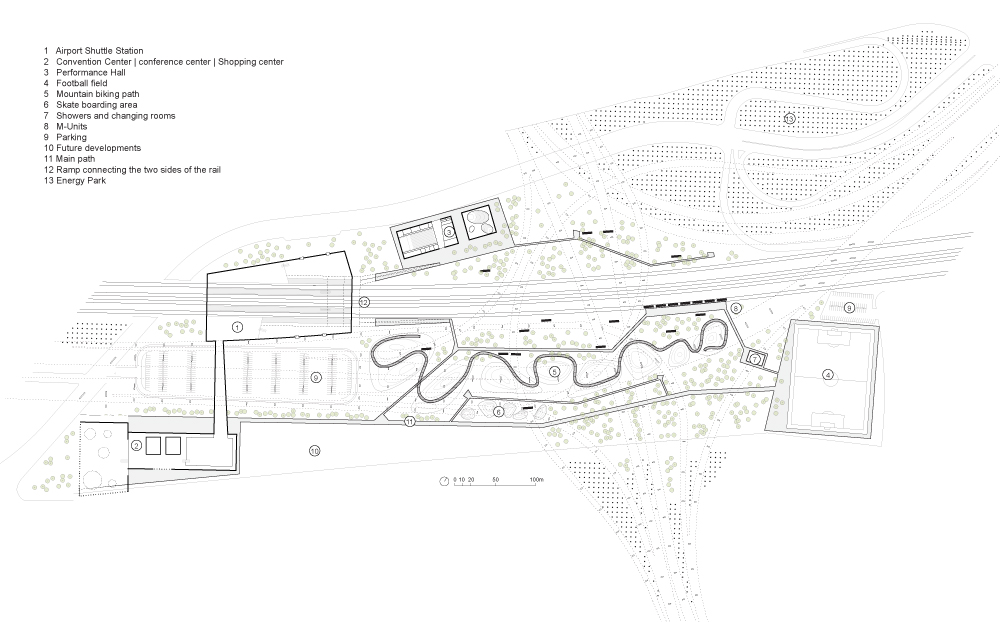The YUL-MTL corridor between Trudeau International Airport and downtown Montreal, is a thickened infrastructural corridor, composed of various networks of movement, including auto routes, railways and waterways. As catalysts for urbanization, these conduits have helped the transformation of Montreal into a leading transportation hub within Canada, and have been an important factor in the industrial expansion of the 19th century and the suburban development of the 20th century. The proximity of Trudeau International Airport, with its 100,000 daily travellers, has essentially transformed the corridor into an international gateway for Montreal, acting as an introduction to the city for about seven million visitors each year. YUL-MTL is also a working corridor, providing essential links between the Port of Montreal, the airport, and the western parts of Canada.
![Proposed network plan. Local interventions in key areas will act as connective public spaces.]()
While the highway system, rail lines, and other urban conduits of YUL-MTL provide vital regional connectivity, on the local scale they have split the urban landscape, creating fragmented urbanities and passive residual spaces. In addition, the transformation of the industrial landscape of the corridor has left in its place brownfields in urgent need for rethinking. The recent efforts of the Ville de Montréal and the ministère des Transports du Québec (MTQ) towards a revitalization plan for the corridor provide a vehicle through which the role of the corridor as a regional connector can be supplemented by local engagement and development.
![Four test sites along the YUL-MTL corridor]()
This proposal exists at the intersection of regional and local performance of the corridor. Rather than a passive regional connector, we propose a performative network, which acts both regionally and locally to generate a catalyst for sustainable development of the corridor. Urban conduits are coupled with renewable energy production and distribution, making use of the right of way and the residual spaces, to host wind farms capable of generating the power needs of the corridor operations (Energy Parks). Local connections are introduced sequentially to stitch the various modes of transportation together at strategic locations. These connections cross urban gaps generated by transportation infrastructures, to produce a porous and continuous urban landscape, and are programmed to complement the planned local developments.
![Mobile unit typologies (M-Units)]()
Based on the dimensions of shipping containers, M-Units are designed as movable units that can travel between Links using the existing rail infrastructure. Once there, they can be deployed along the open spaces to accommodate a variety of urban functions. They can accumulate or disperse based on a set of daily or seasonal parameters which may include weather conditions, intensity of use, events, etc.
![Turcot Park and Turcot Complex]()
Two areas, Turcot Park and Turcot Complex are investigated further to act as examples for the possible localized urban interventions along the corridor. More than local conditions, these interventions, as a networked whole, provide a regional unfolding of the city as one travels along the corridor. This scenographic unfolding is complemented by a materiality reminiscent of the industrial history of the corridor and the various productive landscapes that have replaced the brownfields of the past. This project hopes to strengthen Montreal's position as a hub of innovation and a City of Design, through the emblematic and performative rethinking of YUl_MTL Corridor.
Turcot Park
Turcot Park is imagined as an occupiable bridge over the infrastructural conduits of the highway, rail line, and the water canal. Both spaces above the bridge and under it have been programmed with urban activities that correspond the future development plans of the adjacent lands.
Turcot Complex
Due to its proximity to downtown Montreal and the proposed Airport Shuttle line, Turcot interchange presents a great opportunity for development of a gateway to the city of Montreal. An Airport station is proposed along with a convention centre and performance hall to tap into the international traffic of the corridor.

